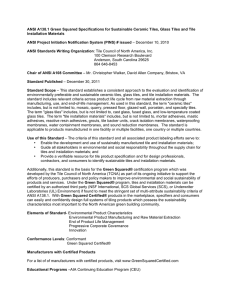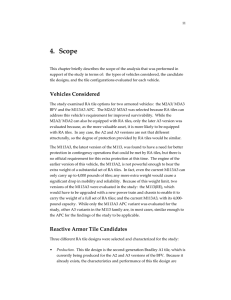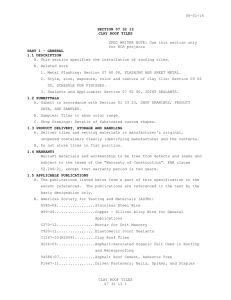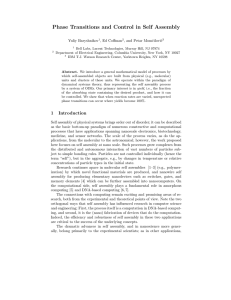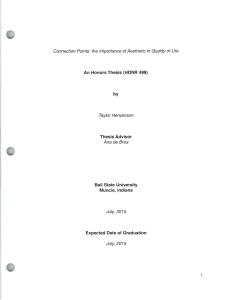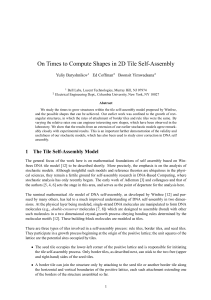Bell work
advertisement
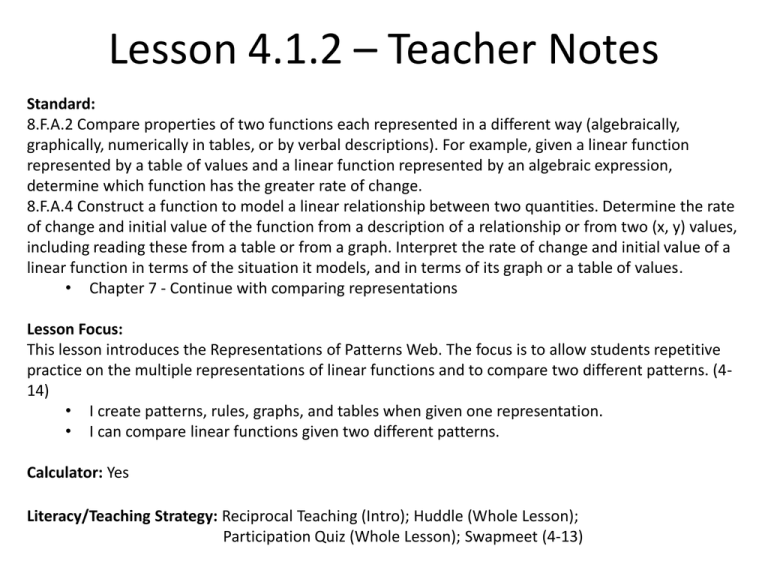
Lesson 4.1.2 – Teacher Notes Standard: 8.F.A.2 Compare properties of two functions each represented in a different way (algebraically, graphically, numerically in tables, or by verbal descriptions). For example, given a linear function represented by a table of values and a linear function represented by an algebraic expression, determine which function has the greater rate of change. 8.F.A.4 Construct a function to model a linear relationship between two quantities. Determine the rate of change and initial value of the function from a description of a relationship or from two (x, y) values, including reading these from a table or from a graph. Interpret the rate of change and initial value of a linear function in terms of the situation it models, and in terms of its graph or a table of values. • Chapter 7 - Continue with comparing representations Lesson Focus: This lesson introduces the Representations of Patterns Web. The focus is to allow students repetitive practice on the multiple representations of linear functions and to compare two different patterns. (414) • I create patterns, rules, graphs, and tables when given one representation. • I can compare linear functions given two different patterns. Calculator: Yes Literacy/Teaching Strategy: Reciprocal Teaching (Intro); Huddle (Whole Lesson); Participation Quiz (Whole Lesson); Swapmeet (4-13) Bell work 4-12. Tile Pattern #1: Examine the tile pattern shown below and on the Lesson 4.1.2 Resource Page that your teacher gives you or explore using 4-12 Student eTool (CPM). a. What do you notice? After everyone has had a moment to examine the figures independently, discuss what you see with your team. b. Sketch the next figure in the sequence (Figure 4) on your resource page. Sketch Figure 0, which is the figure that comes before Figure 1. c. How is the tile pattern growing? Where are the tiles being added with each new figure? On your resource page, use a marker or colored pencil to color in the new tiles in each figure. d. What would Figure 100 look like? Describe it in words. How many tiles would be in the 100th figure? Find as many ways as you can to justify your conclusion. Be prepared to report back to the class with your team’s findings and methods. 4-13. For each of the patterns below, answer questions (a) through (d) from problem 4-12. Use color to shade in the new tiles on each pattern on your resource page. Choose one color for the new tiles in part (a) and a different color for the new tiles in part (b). Tile Pattern #2: 4-13a Student eTool (CPM) Tile Pattern #3: 4-13b Student eTool (CPM) 4-14. PUTTING IT TOGETHER Look back at the three different tile patterns in problems 4-12 and 4-13 to answer the following questions. a. When you compare these three patterns, what is the same and what is different? Explain in a few sentences. b. Find an equation (rule) for the number of tiles in each pattern. Label each tile pattern on your resource page with its rule. 4-14 Continued c. What connections do you see between your equations and the tile pattern? Show and explain these connections. d. Imagine that the team next to you created a new tile pattern that grows in the same way as the ones you have just worked with, but they refused to show it to you. What other information would you need to be able to predict the number of tiles in Figure 100? Explain your reasoning. 4-16. LEARNING LOG For today’s Learning Log entry, draw a web of the different representations, starting with the diagram below. Draw lines and/or arrows to show which representations you have studied so far in this course. Explain the connections you learned today. Be sure to include anything you figured out about how the numbers in equations (rules) relate to tile patterns. Practice





